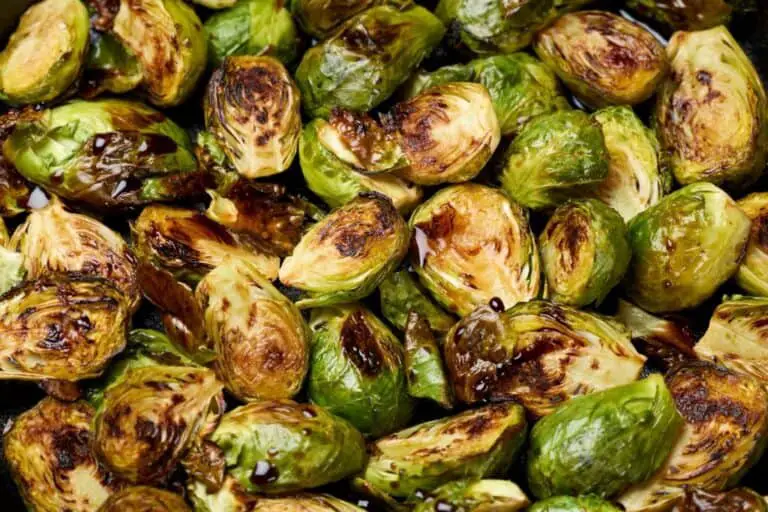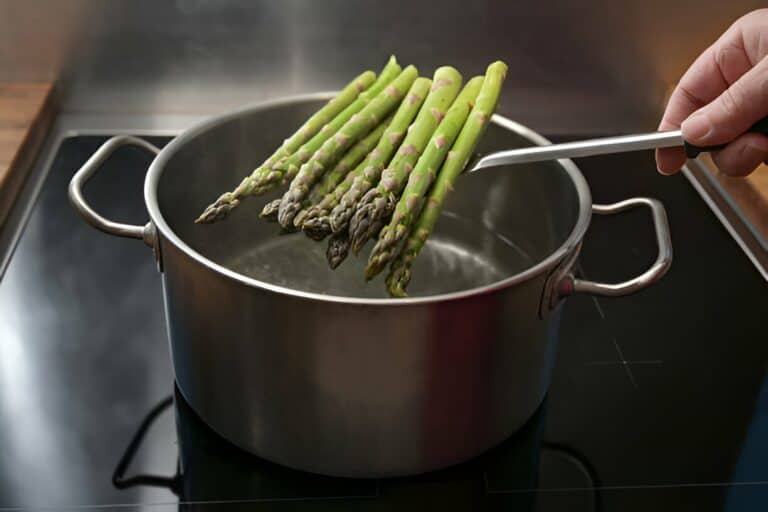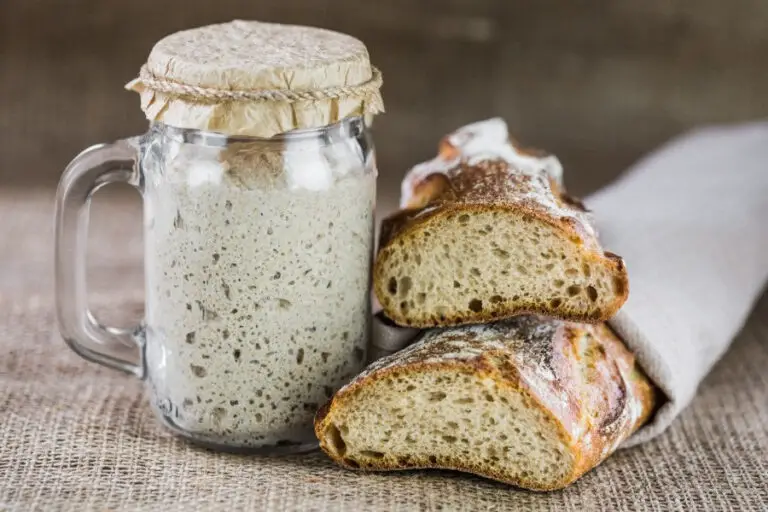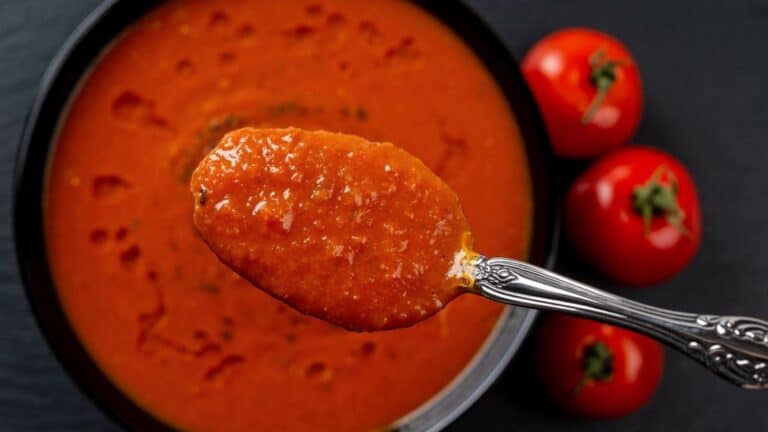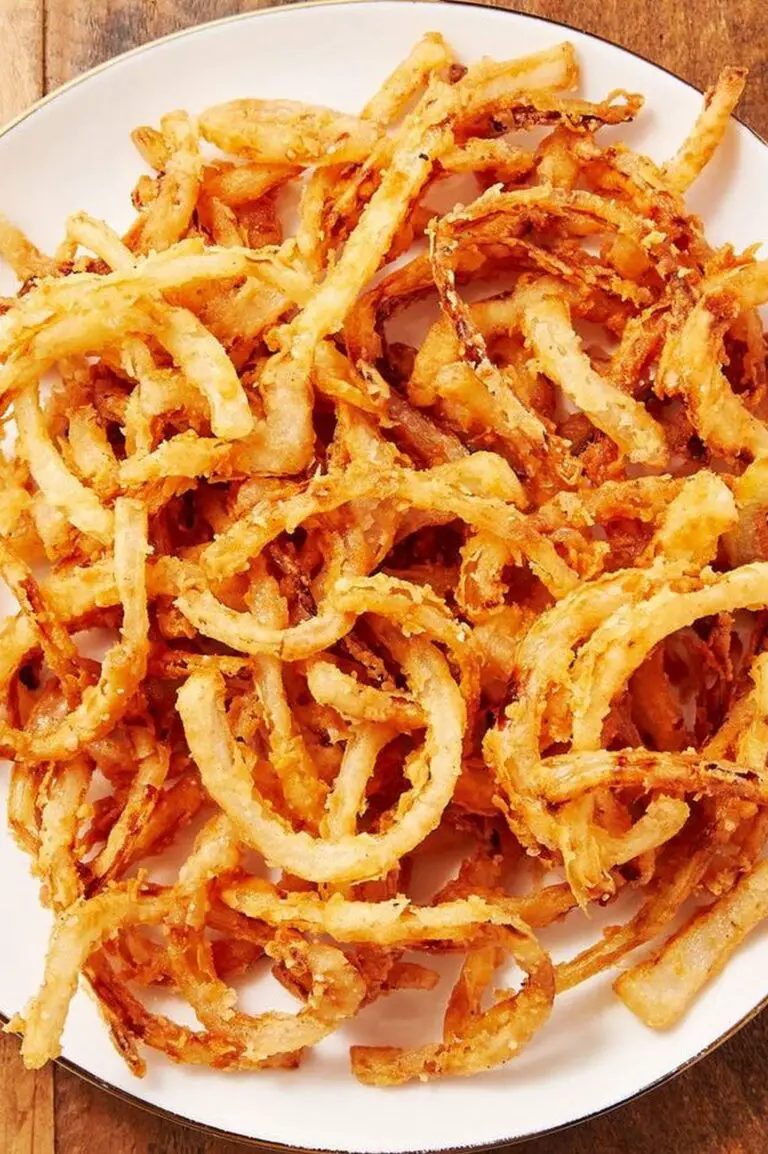Can You Caramelize Onions in a Nonstick Pan? What’s the Best Pan?
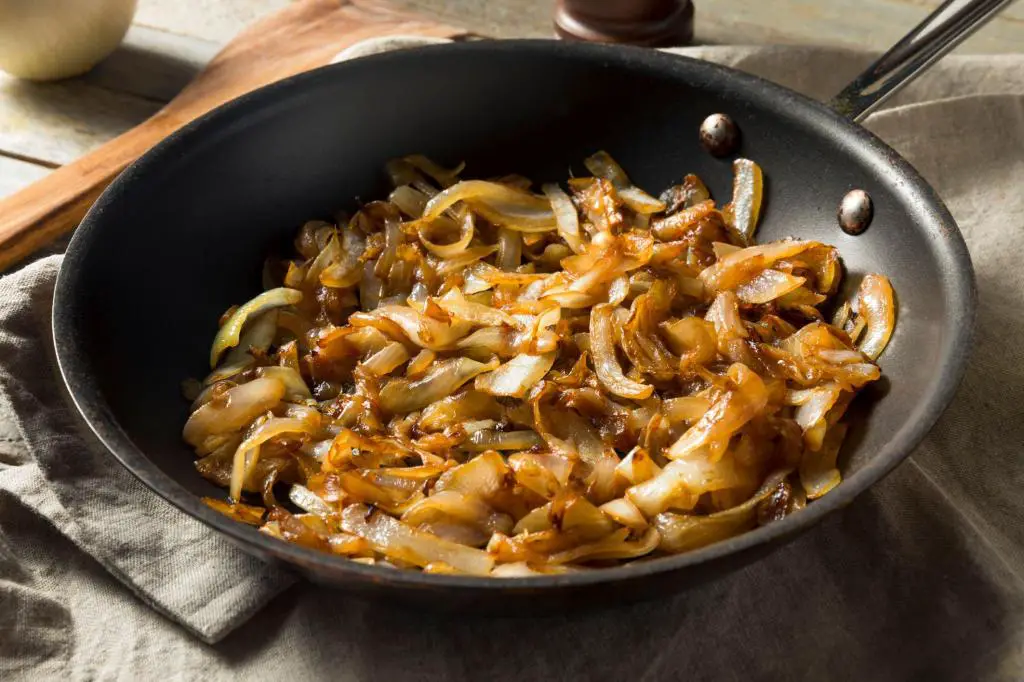
Caramelized onions, with their sweet and savory flavor profile, add a touch of culinary sophistication to a myriad of dishes. But here’s the burning question: Can you achieve that delectable caramelization in a nonstick pan? The answer is a resounding yes, even though it might not be the best option.
In this guide, we’ll delve into the art of caramelizing onions in a nonstick pan, exploring the best pan options, and unveiling the secrets to mastering this culinary feat.
Get ready to embark on a flavorful journey where the pan becomes your partner in crafting the perfect caramelized onions as we decipher the culinary code that turns out.
Understanding Onions Caramelization
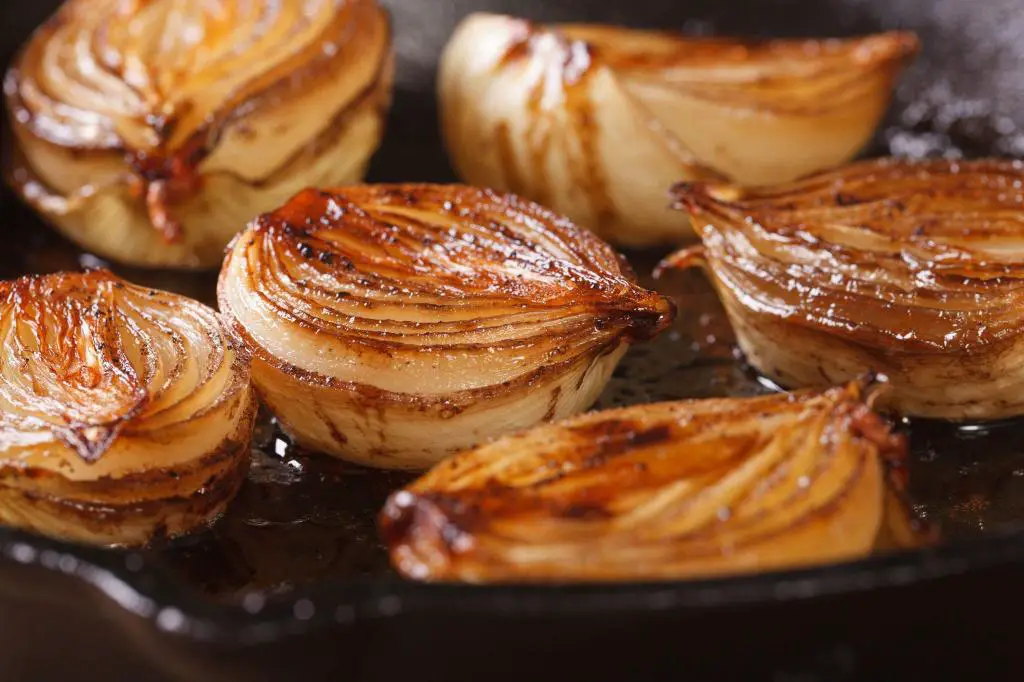
Exploring the world of caramelizing onions is a fun and interesting way to cook. It’s technically feasible, but here’s the culinary catch: the true essence of caramelized onions lies in the fond, that flavorful residue that forms at the pan’s bottom.
This golden treasure is a bit elusive in nonstick pans, suggesting that other options might be more adept at coaxing out that rich, deep flavor. For an onion-caramelization pro, stainless steel or cast iron pans are the go-to choices. These materials foster the development of the fond, ensuring your onions reach that perfect balance of sweetness and savory depth.
The key, irrespective of your pan choice, is embracing the low and slow technique—letting the onions dance at a gentle heat, unlocking their full flavor potential without burning the natural sugars. So, while nonstick pans have a role, the culinary connoisseur might find the richer taste experience they seek in the hearty embrace of stainless steel or cast iron.
Can You Caramelize Onions in a Nonstick Pan?
Yes, you can caramelize onions in a nonstick pan, but it may not be the best option. While it is technically possible to caramelize onions in a nonstick skillet, part of what makes caramelized onions so special is the fond that builds up on the bottom of the pan.
Scraping this up and stirring it into the onions gives them an even richer flavor, and this fond won’t form in a nonstick skillet. Therefore, stainless steel or cast iron skillets are ideal for caramelizing onions.
Every type of pan should work fine as long as you go low and slow and don’t burn the sugar. So, while a nonstick pan can be used, it may not produce the same depth of flavor as a cast iron or stainless steel skillet.
The Nonstick Advantage: Why Go Nonstick?
Before we embark on our caramelization journey, let’s understand why a nonstick pan could be a good choice. Nonstick pans are designed with a special coating, often made of PTFE or ceramic, that minimizes sticking. This makes them ideal for delicate ingredients like onions, ensuring a seamless cooking experience.
Advantages of Nonstick Pans:
- Effortless Release: Onions slide off easily without clinging to the pan’s surface.
- Even Heating: Nonstick pans distribute heat evenly, preventing uneven caramelization.
- Easy Cleanup: Minimal residue means a breeze to clean up after the caramelization process.
Choosing the Right Nonstick Pan
Not all nonstick pans are created equal. Selecting the right one is crucial for achieving that perfect caramelization. Consider the following factors when making your choice:
Material:
- Opt for a nonstick pan with a durable coating, like PTFE or ceramic.
- Stainless steel or aluminum core for optimal heat distribution.
Size:
Choose a pan size that suits your recipe. A larger pan allows for even spreading and quicker caramelization.
Handle Comfort:
Look for ergonomic handles for a comfortable grip during the caramelization process.
Oven-Safe:
Check if the nonstick pan is oven-safe for recipes that involve finishing in the oven.
Brand Reputation:
Stick to reputable brands known for their quality nonstick pans.
Nonstick Pans vs. Other Cookware (What’s the Best Pan?)
Choosing the right cookware for onion caramelization is crucial for achieving that perfect blend of sweetness and savory goodness. Let’s delve into the world of nonstick pans versus their alternatives. Nonstick pans offer a smooth surface that prevents food from sticking, ensuring a hassle-free caramelization process. Their convenient cleanup is a major plus, making them a go-to choice for many home cooks.
However, it’s essential to weigh the pros and cons. While nonstick pans excel in preventing sticking and ease of cleaning, they may not provide the same depth of flavor as other materials.
Cast iron and stainless steel pans, for instance, bring their unique characteristics to the caramelization game. Cast iron retains and distributes heat evenly, contributing to a more robust caramelization, while stainless steel pans offer durability and a distinctive searing capability.
Your choice ultimately depends on the balance you seek between convenience and flavor intensity in your caramelized creations.
Step-by-Step Guide to Caramelizing Onions in a Nonstick Pan
Now that you’ve chosen your nonstick pan, let’s dive into the actual process of caramelizing onions. Follow these steps for a delightful outcome:
Ingredients:
- Onions (yellow or sweet onions work best)
- Olive oil or butter
- Salt and pepper to taste
Instructions:
- Preparation:
- Peel and slice the onions thinly for even caramelization.
- Preheat your nonstick pan on medium-low heat.
- Add the Fat:
- Coat the pan with olive oil or butter. A tablespoon or two is usually sufficient.
- Onion Addition:
- Add the sliced onions to the pan, ensuring an even layer.
- Low and Slow:
- Cook the onions on low to medium-low heat. Patience is key for achieving that deep caramel color.
- Stirring Technique:
- Stir the onions occasionally to prevent sticking and ensure uniform caramelization.
- Seasoning:
- Add salt and pepper to taste. The salt helps draw out moisture, aiding in the caramelization process.
- Golden Perfection:
- Continue cooking until the onions turn a rich golden-brown color. This may take 30 minutes or more.
- Deglazing (Optional):
- For an extra layer of flavor, consider deglazing the pan with a splash of balsamic vinegar or wine.
- Serve and Enjoy:
- Your perfectly caramelized onions are ready to enhance a variety of dishes. Serve over burgers, pizzas, or in soups for a flavor boost.
Tips for Success
Achieving caramelization perfection requires a bit of finesse. Consider these tips to elevate your nonstick pan caramelization game:
- Uniform Slicing: Ensure consistent thickness for even cooking.
- Low Heat: Resist the temptation to crank up the heat; slow and steady wins the caramelization race.
- Minimal Disturbance: Avoid excessive stirring; let the onions work their magic undisturbed.
- Deglaze Thoughtfully: If deglazing, choose liquids that complement the dish for an added flavor dimension.
Conclusion
In conclusion, yes, you can absolutely caramelize onions in a nonstick pan! Armed with the right pan, a bit of patience, and our step-by-step guide, you’ll be creating culinary masterpieces in no time.
In unraveling the mysteries of onion caramelization, our culinary journey has taken us through the sizzling debate of whether a nonstick pan can truly capture the essence of this savory transformation. The keywords—onion caramelization in nonstick pan, nonstick pan caramelized onions, cooking onions without sticking, caramelizing onions with a nonstick coating, and tips for nonstick pan onion caramelization—have guided our exploration.
While technically feasible, the nonstick pan, with its sleek convenience, may not provide the canvas for the full depth of flavor that caramelized onions offer. Stainless steel and cast iron, with their robust surfaces, emerge as the unsung heroes of this flavorful saga. The golden rule of low and slow remains paramount, ensuring that the sweet symphony of caramelization unfolds seamlessly.
In the culinary orchestra, the nonstick pan may hit a note, but for the full harmonious experience, the resounding choice leans toward the sturdier companionship of stainless steel or cast iron. So, as you embark on your caramelization escapades, remember: it’s not just about the onions—it’s about the pan that unlocks their full potential.
FAQs
Can I use any type of onion for caramelization?
Different onions yield different results. Sweet onions are often preferred, but you can experiment with others.
Is it necessary to use low heat when caramelizing onions?
Yes, low heat allows the sugars in the onions to caramelize slowly, developing a rich flavor.
How do I clean and care for my nonstick pan after caramelizing onions?
Use a soft sponge and mild detergent. Avoid abrasive tools that can damage the nonstick coating.
Can you caramelize onions in a stainless steel pan?
Yes, you can caramelize onions in a stainless steel pan. While nonstick pans are often recommended, stainless steel works too. Ensure low to medium heat and frequent stirring to prevent sticking.
What is the best heat setting for caramelizing onions?
Low to medium heat is ideal for caramelizing onions. This slow cooking process allows the natural sugars to develop, creating a sweet and savory flavor.
How long does it take to caramelize onions in a nonstick pan?
Caramelizing onions in a nonstick pan typically takes 15–30 minutes, depending on the heat level and desired caramelization depth. Patience is key to the best results.
Can you freeze caramelized onions?
Yes, you can freeze caramelized onions. Allow them to cool, store in airtight containers or bags, and freeze for up to six months. Thaw and reheat as needed for convenient use.


